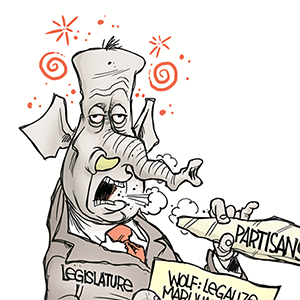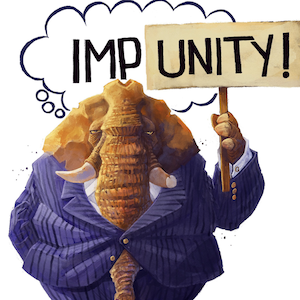Commentary: 'Made in America' is alive, well and misunderstood
Published in Op Eds
The president supports purchasing goods that are “made in America.” To encourage this, President Donald Trump has imposed tariffs on imports from literally every country that the U.S. does business with, with 10% to 15% as the floor baseline. His hope is that tariffs would push more companies to move their manufacturing and production operations stateside, which he believes would reduce the $1.2 trillion trade deficit in goods (in 2024).
Yet the aspirational goal of buying goods made in America is misguided and largely an unreachable myth.
Many well-known American companies rely on importing their consumer goods. Apple imports the majority of its iPhones, with China accounting for 80% of its manufacturing capacity. With 155 million iPhone users in the U.S., and iPhones holding over 57% of the smartphone market, Americans’ love affair with iPhones is here to stay, independent of where they are assembled.
Nike manufactures nearly all of its athletic shoes and sportswear abroad, with Vietnam, China and Indonesia as their primary factory locations. It is difficult to attend a college football game without seeing the Nike swoosh somewhere on the field, given that the company sponsors the majority of top-ranked college football teams. Its presence at March Madness is also indisputable, sponsoring 60% of the men’s and women’s teams that participated in the 2025 tournament. None of these teams are prepared to boycott Nike because it manufactures its products overseas.
Wrangler, the company known for its jeans, makes most of its clothing items overseas. For those intent on buying items made in America, they do make a few lines domestically (the 27406 and 1947 collections). Another popular jean manufacturer, Levi-Strauss, also manufactures the majority of its products overseas.
The reason that such iconic all-American companies have moved their production capacity to China, Vietnam, Bangladesh, India and Mexico, among others, is cost. Labor costs in these countries are significantly lower than in the U.S. Given that American consumers are highly price sensitive, they demand lower prices. Since consumer spending is 70% of the nation’s gross domestic product, which now rests at around $30 trillion, anywhere costs can be reduced to keep prices competitive is an opportunity that companies have exploited, and they will continue to do so.
Yet all the companies listed manufacture nondurable goods, which have short shelf lives. Indeed, measuring “made in America” only at the most basic or lowest level of consumption is misleading.
In a free-market economy, new ideas for companies that are nurtured and grown in America are what should define “made in America.” Indeed, it is the American entrepreneurial spirit that defines what is “made in America,” not the actual operations and facilities that produce the products.
One place to look for future “made in America” companies is the number of patents issued in the U.S. Nearly 400,000 patents were issued in 2020, the largest number in history. However, the recent downward trend is a red flag for “made in America” companies yet to be launched.
Focusing on where companies are launched, and how they succeed is what makes them American. New business applications have been surging, with 5 million such applications filed in 2023, providing some hope that “made in America” companies continue to be a priority.
And nowhere is such entrepreneurship being fostered and grown more than at American universities. Almost one-third of college students aspire to launch their own business. Where students study is also important, as they often launch their new business in the same state. This makes universities the ideal incubator for new businesses.
All such economic value is why efforts to remake higher education are misguided, destructive and will ultimately hurt not only universities, but everyone.
The president’s dislike of DEI may be his publicly stated reason behind his attacks on higher education. Yet throwing the baby out with the bathwater will stifle American entrepreneurship and make everyone, across all socioeconomic groups, poorer.
Indeed, the president’s approach in controlling higher education will provide headwinds to achieve his objective of economic growth and prosperity. Long after he has left office, the carnage of his actions will be felt for all.
“Made in America” is more than just about goods produced and services delivered. It is about companies launched, new innovations uncovered and inspired entrepreneurship. That is where the focus on “made in America” should be, and facilitating such an environment is what can “Make America Great Again.”
____
Sheldon H. Jacobson, Ph.D., is a professor in the Grainger College of Engineering at the University of Illinois Urbana-Champaign. A data scientist, he uses his expertise in risk-based analytics to address problems in public policy.
_____
©2025 Chicago Tribune. Visit at chicagotribune.com. Distributed by Tribune Content Agency, LLC.

























































Comments